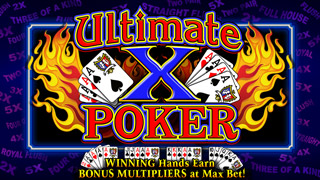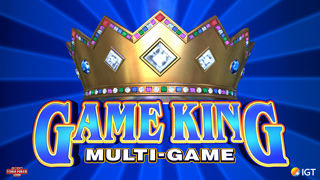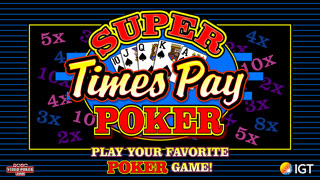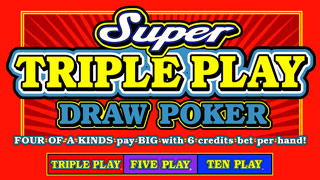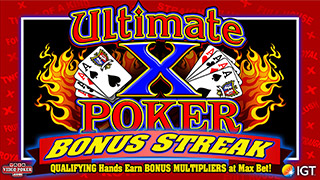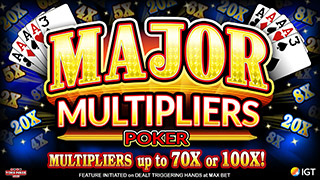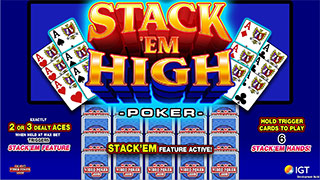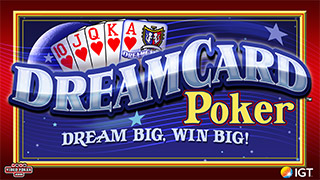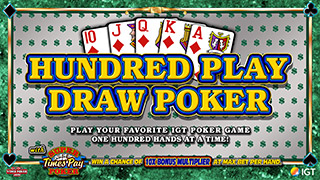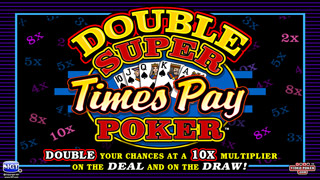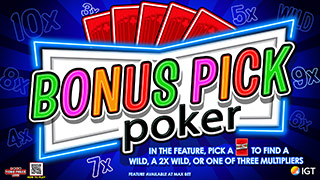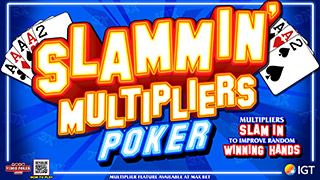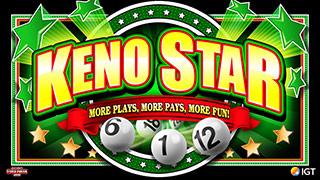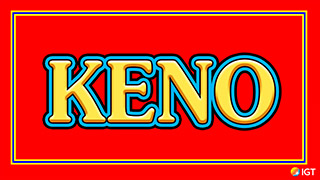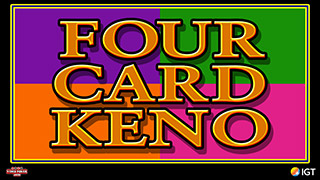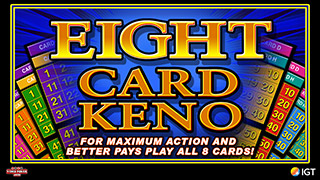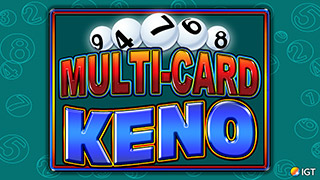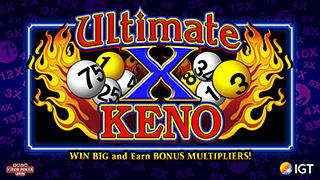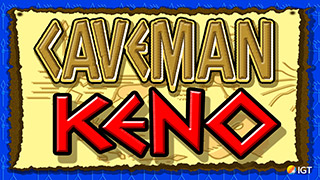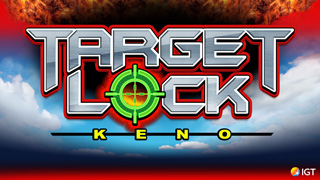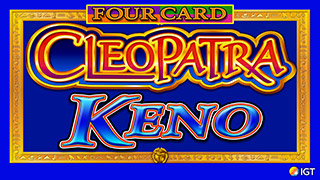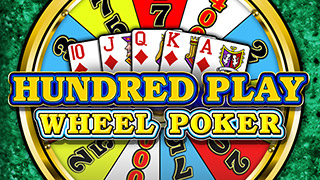Captive Progressives
-
random_ness
- Forum Newbie
- Posts: 5
- Joined: Sun May 27, 2012 3:30 pm
Captive Progressives
I wanted to ask a question about the proper way to calculate the return on a bank of progressives that you can keep to yourself. This calculation assumes that you sit down at some point and play until a royal.
The game is DDB 9/5 and the progressive meter goes up by three cents every hand on a quarter machine(This seems odds to me for obvious reasons but the bank of machines has 8/5 jacks and below 97% deuces and joker games that I've seen people playing, so maybe it is profitable for the casino anyway).
Anyway, this is a 97.8% game without the progressive and I know the 100% cutoff point is a 1944 dollar jackpot with perfect play. Here is the question. If you take over the bank of machines at the even money point, what is your expected return?
My back of the book calculation seems to suggest the return would be over 2% on the machine if you play until a royal.
The calculation I did to get the dollar payoff was
the sum of
(1/PR)*(1-1/PR)^(i-1)*(1944+.03(i-1)+1.25(i-1)*0.953019-1.25i)
Where PR is probability of royal at break-even point and i is the hand number. The first part is the probability you hit a royal on any particular ith hand and the second part is the dollar return in expectation. The 0.953019 is your expected return on any hand you don't hit a royal at the break even point. I ignored strategy deviations after this point.
That gives you your expected payoff in dollars and you can use a different formula to get the expected number of hands or expected time played to calculate your returns.
There is an additional wrinkle in this particular machine, but I want to ask this question first and see if my logic is correct.
The game is DDB 9/5 and the progressive meter goes up by three cents every hand on a quarter machine(This seems odds to me for obvious reasons but the bank of machines has 8/5 jacks and below 97% deuces and joker games that I've seen people playing, so maybe it is profitable for the casino anyway).
Anyway, this is a 97.8% game without the progressive and I know the 100% cutoff point is a 1944 dollar jackpot with perfect play. Here is the question. If you take over the bank of machines at the even money point, what is your expected return?
My back of the book calculation seems to suggest the return would be over 2% on the machine if you play until a royal.
The calculation I did to get the dollar payoff was
the sum of
(1/PR)*(1-1/PR)^(i-1)*(1944+.03(i-1)+1.25(i-1)*0.953019-1.25i)
Where PR is probability of royal at break-even point and i is the hand number. The first part is the probability you hit a royal on any particular ith hand and the second part is the dollar return in expectation. The 0.953019 is your expected return on any hand you don't hit a royal at the break even point. I ignored strategy deviations after this point.
That gives you your expected payoff in dollars and you can use a different formula to get the expected number of hands or expected time played to calculate your returns.
There is an additional wrinkle in this particular machine, but I want to ask this question first and see if my logic is correct.
-
BillyJoe
- Video Poker Master
- Posts: 3198
- Joined: Sat Aug 23, 2008 2:00 pm
If every player in your bank put up $1000, they would net $20. You can get 3-5% in a low-risk bond fund. Why bother?
-
shadowman
- Video Poker Master
- Posts: 3587
- Joined: Mon Oct 23, 2006 5:42 pm
If 3 cents out of every $1.25 is put back into the machine then this represents 2.4% additional money going into the pay table.
I believe you can just simply say the return is 102.4% if you start at the even money point. Probably not exact but it should be close.
Billyjoe, your comparison isn't quite accurate.The 3-5% bond return is an annual return. When playing VP the return compounds every time you hit the RF. This could occur many times in a year depending on how much one plays.
I believe you can just simply say the return is 102.4% if you start at the even money point. Probably not exact but it should be close.
Billyjoe, your comparison isn't quite accurate.The 3-5% bond return is an annual return. When playing VP the return compounds every time you hit the RF. This could occur many times in a year depending on how much one plays.
-
random_ness
- Forum Newbie
- Posts: 5
- Joined: Sun May 27, 2012 3:30 pm
If every player in your bank put up $1000, they would net $20. You can get 3-5% in a low-risk bond fund. Why bother?
Because its 20 dollar in EV an hour rather than a year. And you are totally wrong about 3-5 in a low risk bond fund. The yield on Vanguard prime money market is .04%. I don't know if you know this, but we're at the zero lower bound on nominal interest rates and have been since 2008. If you are thinking about long-term bonds, those are extremely risky if your holding period is a year. Fluctuations in interest rates change the price of the bond.
Because its 20 dollar in EV an hour rather than a year. And you are totally wrong about 3-5 in a low risk bond fund. The yield on Vanguard prime money market is .04%. I don't know if you know this, but we're at the zero lower bound on nominal interest rates and have been since 2008. If you are thinking about long-term bonds, those are extremely risky if your holding period is a year. Fluctuations in interest rates change the price of the bond.
-
random_ness
- Forum Newbie
- Posts: 5
- Joined: Sun May 27, 2012 3:30 pm
If 3 cents out of every $1.25 is put back into the machine then this represents 2.4% additional money going into the pay table.
I believe you can just simply say the return is 102.4% if you start at the even money point. Probably not exact but it should be close.
Billyjoe, your comparison isn't quite accurate.The 3-5% bond return is an annual return. When playing VP the return compounds every time you hit the RF. This could occur many times in a year depending on how much one plays.
Thank you Shadowman, that sounds about right and much more simple than my approach.
The extension that I wanted to ask about is that the machine is not a single quarter video poker machine but instead a 10 play machine with 10 different royal flush jackpots. Each jackpot increases by 3 cents per hand on each machine.
Now the problem here is that if you start at 1944 or 19440 with the 10 jackpots and play until you hit a royal, you only capture the extra 2.4% on one royal, so its more like .24%. However, its not at all obvious that this is the optimal strategy for the bank of machines.
What would the optimal strategy be if you had a team sit down and play the bank until some event occurred and how would you calculate the outcome? Is it true that I would have an expected 2.4% return if I played until all royals in the bank were hit? How would I go about figuring out strategies better than this?
I believe you can just simply say the return is 102.4% if you start at the even money point. Probably not exact but it should be close.
Billyjoe, your comparison isn't quite accurate.The 3-5% bond return is an annual return. When playing VP the return compounds every time you hit the RF. This could occur many times in a year depending on how much one plays.
Thank you Shadowman, that sounds about right and much more simple than my approach.
The extension that I wanted to ask about is that the machine is not a single quarter video poker machine but instead a 10 play machine with 10 different royal flush jackpots. Each jackpot increases by 3 cents per hand on each machine.
Now the problem here is that if you start at 1944 or 19440 with the 10 jackpots and play until you hit a royal, you only capture the extra 2.4% on one royal, so its more like .24%. However, its not at all obvious that this is the optimal strategy for the bank of machines.
What would the optimal strategy be if you had a team sit down and play the bank until some event occurred and how would you calculate the outcome? Is it true that I would have an expected 2.4% return if I played until all royals in the bank were hit? How would I go about figuring out strategies better than this?
-
Quad Deuces
- Senior Member
- Posts: 318
- Joined: Fri Feb 17, 2012 6:23 pm
If every player in your bank put up $1000, they would net $20. You can get 3-5% in a low-risk bond fund. Why bother? Because that same thousand can be put through a positive VP machine many, many times instead of sitting practically stagnant for a year.The top-end of "3-5% in a low-risk bond fund" is $50, the low end is $30.Is there really any such thing as a "low-risk bond fund" anymore? With treasuries paying almost zero, anything paying 3-5% can hardly be called "low-risk." Maybe "relatively low-risk when compared to high-risk might-be-kicked-out-of-or-quit-the-eu bond funds."These days I trust the Nevada casinos more than I do the financial markets. Sad, but absolutely true.
-
Quad Deuces
- Senior Member
- Posts: 318
- Joined: Fri Feb 17, 2012 6:23 pm
Stated differently:Test case Alpha: Just graduated college, can't get a job. Nobody's hiring. Has $10,000 in cash and a buddy can drive him to Las Vegas and let him sleep on his couch for a month.Should he invest his cash in "low-risk bond funds paying 3-5% per year" or play video poker?Say he chooses to invest in the "low-risk bond funds". He has no cash to draw on and after a year he has $10,500, best case. As we have seen, like in a casino, he could have nothing.Another choice of his is to learn to play full-pay deuces wild, which pays back $100.76 for every $100 put through it.Say our subject gets proficient, but slow, and can play 600 hands per hour perfectly. Say our subject can set aside 16 hours per week to play while he looks for a "real job." He can get to and from this particular casino on a bicycle. After 52 weeks our subject has put $624,000 through the machine with an expected return of $4,742. And that's without the slot club, promotions, and other benefits received by putting over half-a-million through a casino in a year (not bad for a guy who's unemployed and basically broke).Who is better off? The unemployed guy making $4,742 (very part time) or the investor making $500. Guess that depends on your point-of-view.



